Moisture problems are one of the most common issues your HVAC system encounters. So, if you observe condensation on your air handler and wonder how to stop it, we researched it for you. Here are some significant answers we gathered.
The first step is to look for the right source of condensation. After you have confirmed the cause of the air handler's condensation, you can take the following measures:
- Have adequate insulation for the air handling unit ducts if a section of the duct comes into contact with outside, unconditioned air.
- If your home's air handler unit is in the crawl area, properly sealing the space will help you minimize or eliminate the sweating issue by keeping out humid outside air and ground moisture.
- You can also use a dehumidifier in your crawl space if that is where the air handler is located.
- Consider performing a filter change or air handler duct cleaning.
- Increase the air conditioning temperature; the return air temperature will also rise, decreasing the likelihood of sweating at the AHU.
- Repair any crack or damage in your drain pan.
Keep reading to know what causes your air handler to sweat. Additionally, we'll cover the effects of this problem and why you should solve it immediately. We'll also give you some preventive measures to avoid this problem.
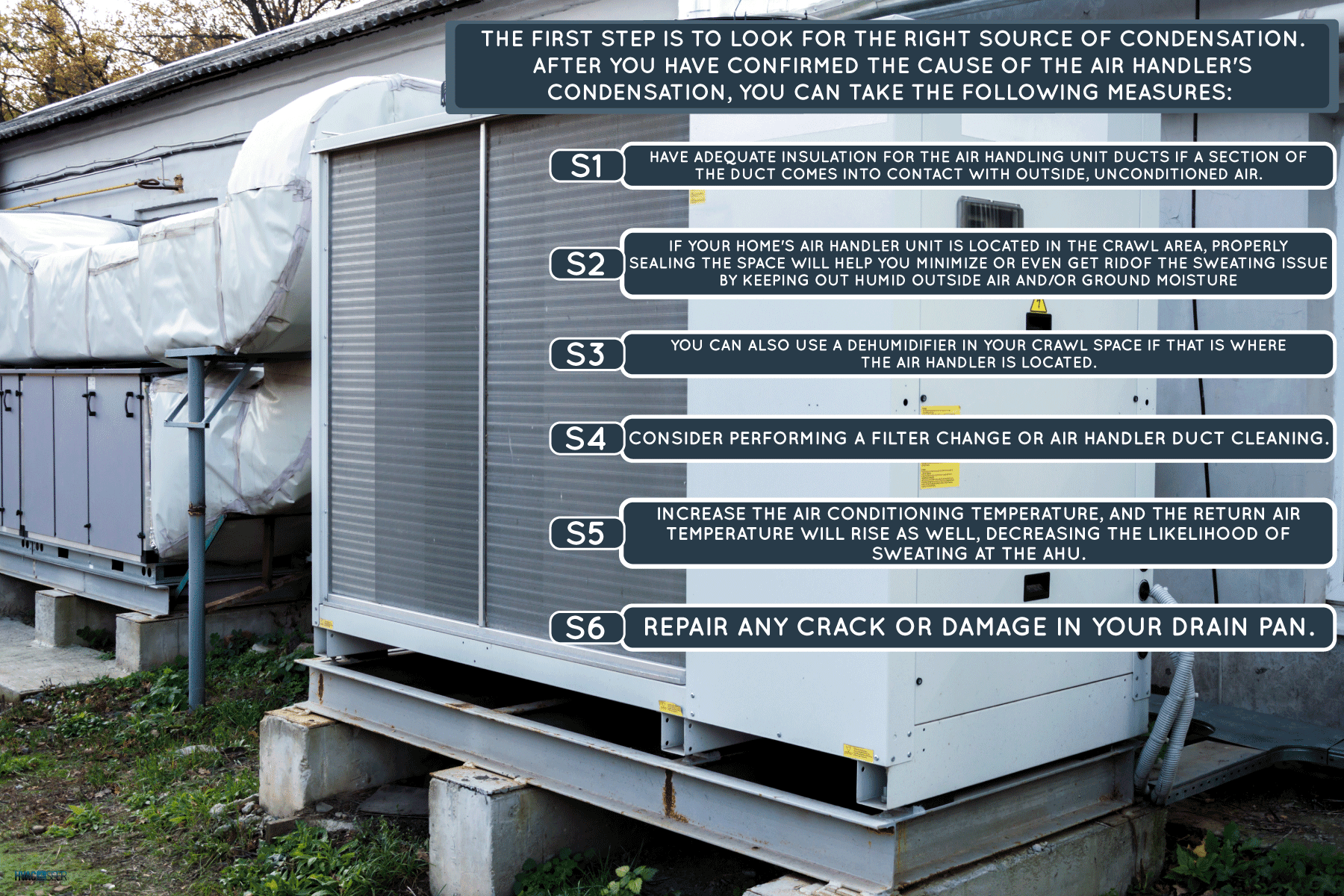
What Causes Condensation On Your Air Handler Unit?
Your air handler may experience sweating for the following reasons:
- Air Flow and Humidity: There may be less airflow and more humidity around an air handler if it is located in a crawlspace, attic, garage, or closet. Condensation results from mixing hot, humid air with the air handler's internal cold air and cool metal.
- Air Handler Drain Pipe Blocked: The chilled water inside will stay within for a longer period and cause the outside air to condensate over the surface of the unit if the drain pipe for the air handler becomes blocked and the air handler is not appropriately inclined.
- Leak On Ducts: The likelihood of condensation will rise if the ducts leak chilly air.
- Evaporator Coil Icing: Iced evaporator coils will result in a local drop in temperature at the air handler unit and may lead to sweating.
- Lack Of/Improper Insulation: The air handlers in some situations are just not sufficiently insulated. This is usual if you notice dampness or microbial development at the air handler joints/connections to the ductwork and plenum.
- Incorrect Thermostat Setting: It might not be able to insulate the unit sufficiently to stop the condensation if the house becomes too cold relative to the outside air.
- Broken/Cracked Drain Pan: The system is no longer shielded from condensation if the drain pan fractures, which might harm the unit.
- Low Refrigerant Level: Low refrigerant levels will result in low system pressure and inadequate cooling from the unit. The evaporator coil will also freeze before melting and overflowing the pan.
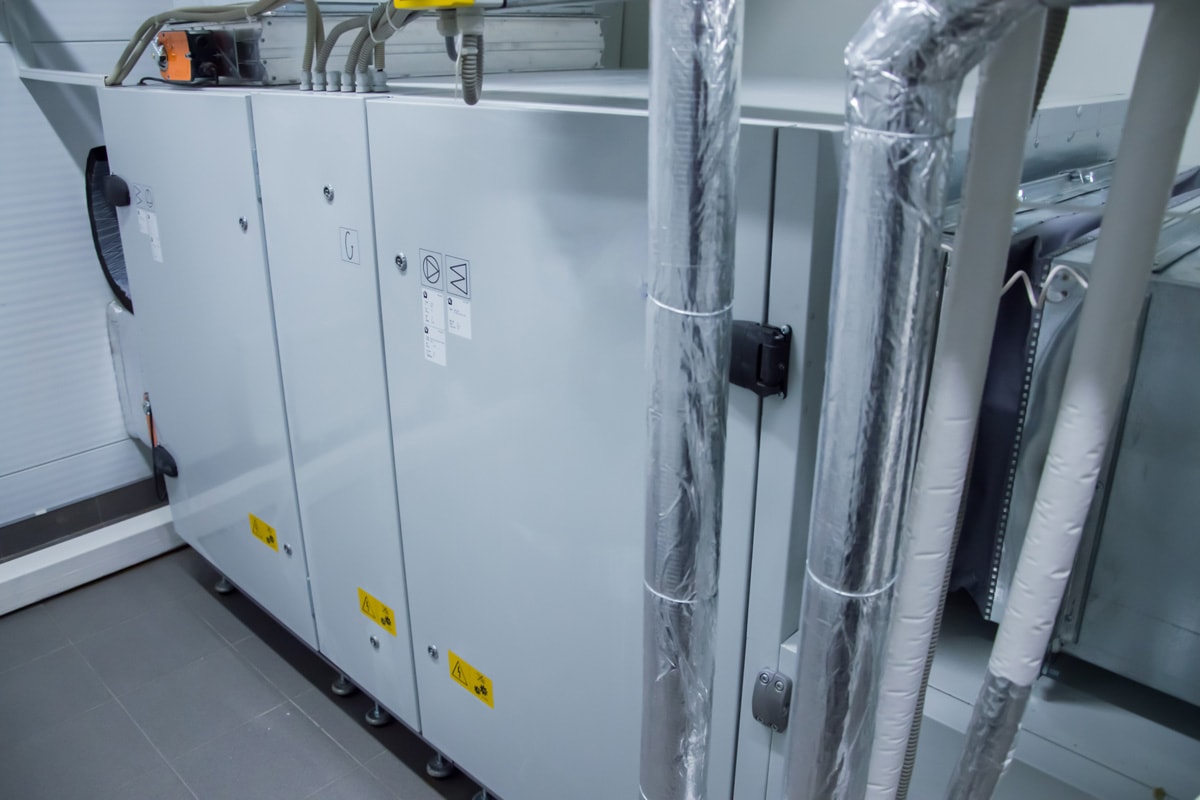
Why Is It Important To Immediately Solve Condensation On Your Air Handler?
For air conditioning systems that are functioning properly, condensation is typical.
Excessive condensation, such as sweating ducts and drips from the outside of the unit cabinet, signifies a problem with your unit and that your HVAC system needs immediate repair.
Without immediate attention, excessive condensation could overflow the drainage system of your unit, resulting in damage to your home.
This harm can take the form of structural damage from drainage water that builds up puddles, excessive humidity levels that promote the growth of mold and mildew, and stains.
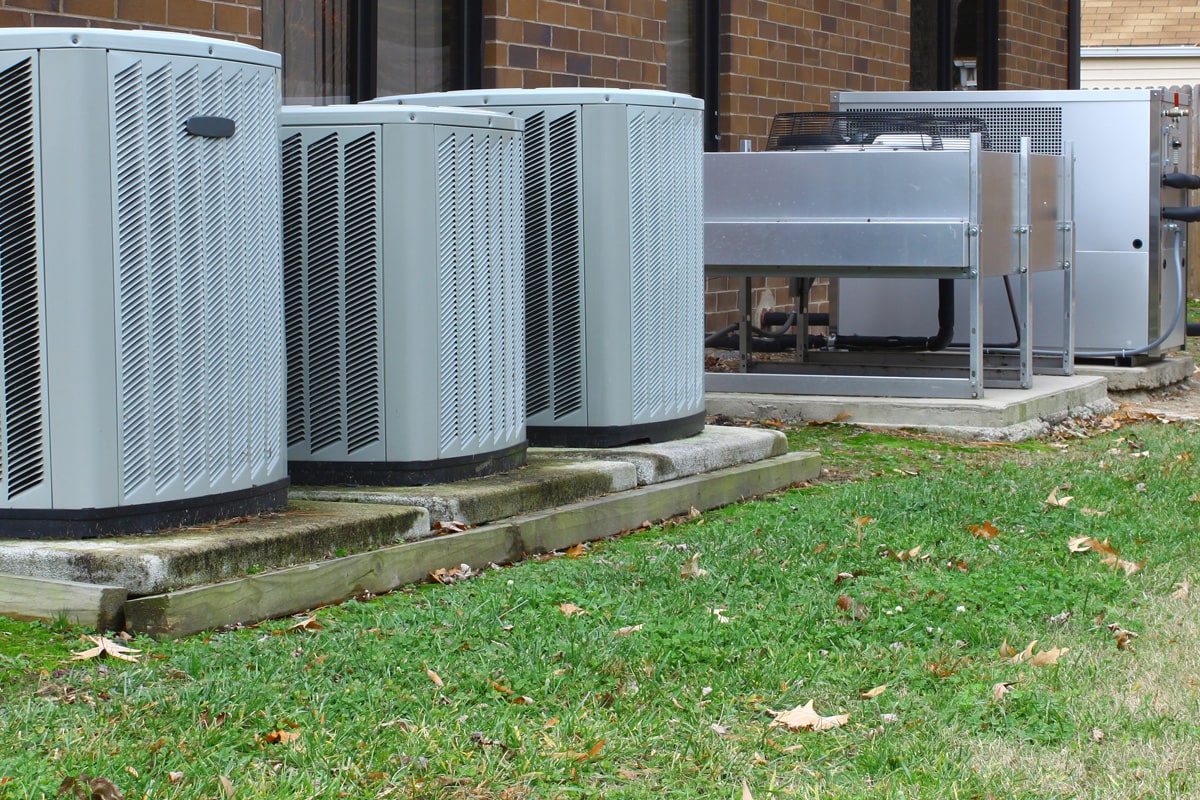
What Problems Might Arise From Too Much Condensation On Your Air Handler?
Excessive air handling unit condensation can lead to these problems:
Water Damage To Your Property
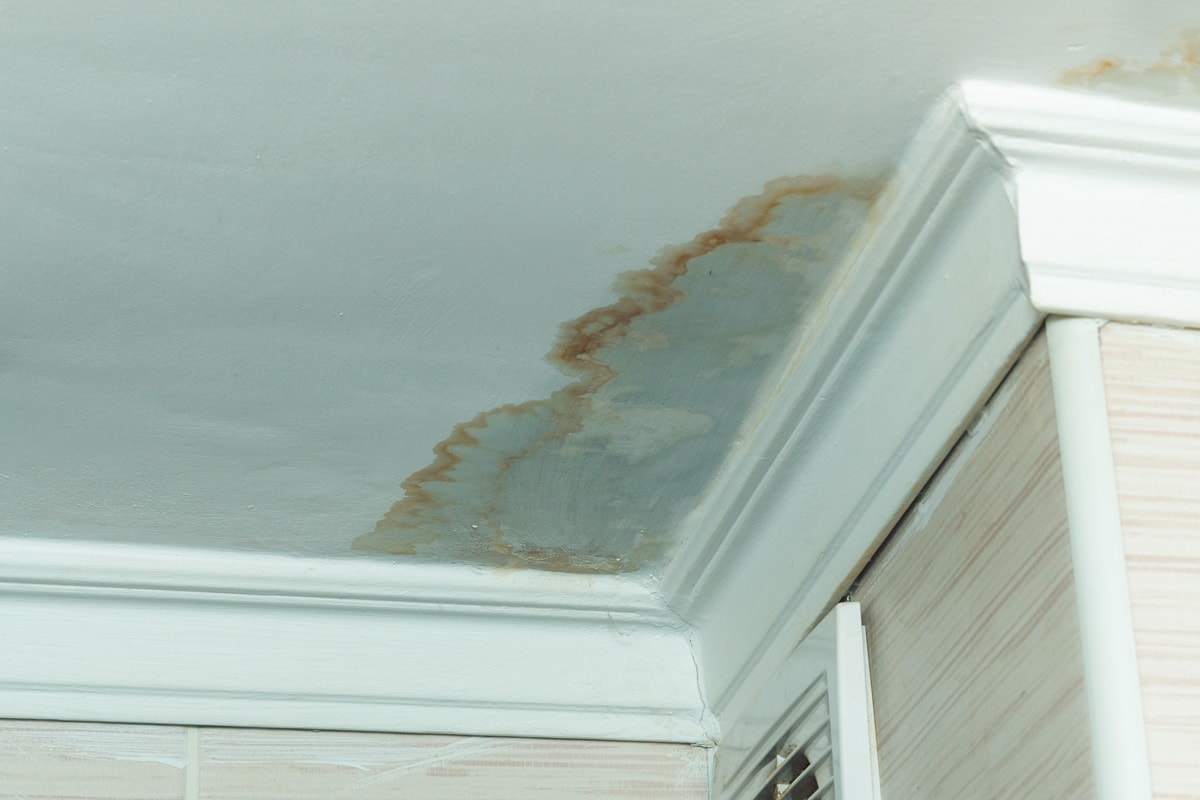
Water damage in your property might result from condensation overflow. Since the location of the indoor component of your unit is frequently the site of this damage and is usually not one that you often visit, your home may sustain significant water damage before you know there is an issue.
Mold And Mildew Growth

Your home's humidity levels will start to rise due to the water leak, which may cause pain as well as the growth of mold and mildew. Their presence can worsen damage to your house and degrade the air quality there.
Damage To Your Unit
You most likely don't want excessive condensation to stop your unit from functioning, as you presumably want it to keep running. A condensation pan overflow switch will turn off your air handler if there is too much water.
When there is too much moisture in the system, your unit may refuse to turn on, so you must contact an expert to service it.
Tips To Avoid Condensation On Your Air Handling Unit
Here are some preventive measures to avoid excess condensation on your air handling unit:
- Add vents to increase the airflow around the air handler. Keep the doors open or install a fan if the unit is in a garage or closet.
- Regularly check for leaks in your HVAC lines. Leaks in the condensation lines of some units commonly go undetected because they are hidden inside walls and in locations with little traffic.
- Depending on whether you have pets or smokers, you should change the air filter every 30-90 days. You might then need to change it more frequently.
- Additionally, ensure no obstructions exist in the registers and vents.
- Regularly clean your drain lines.
What Is The Best Material To Use For Air Handler Insulation?
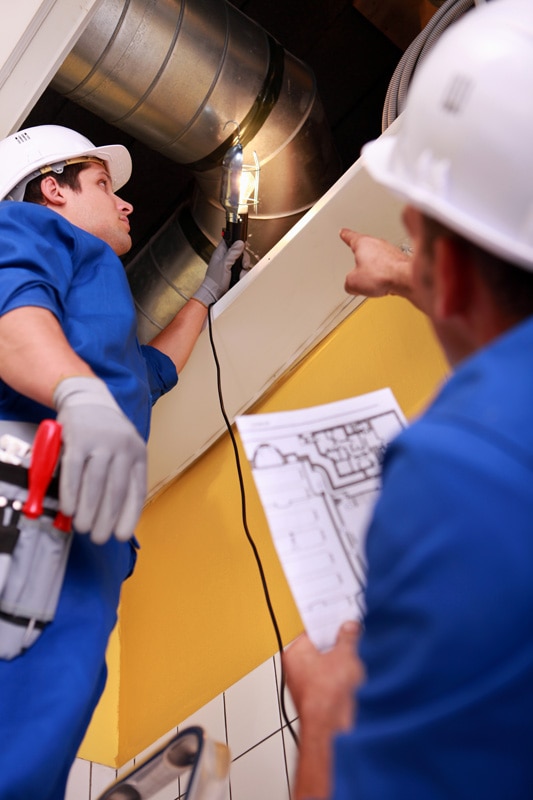
Most air handler units have fiberglass as material for insulation added on the inside surfaces to help with sound absorption, thermal insulation, and HVAC system quietness.
Click here for this product on Amazon!
However, extreme variations in temperature, humidity, and air turbulence may cause the integrity of the fiberglass insulation to deteriorate and delaminate in some situations.
That's why it is recommended to swap out the fiberglass insulation for closed-cell foam insulation if the air handler insulation needs to be replaced. Compared to fiberglass insulation, closed-cell foam insulation has many advantages, including:
- a smoother finish;
- greater durability; and
- resistance to dirt and moisture buildup.
How Often Should You Clean Your Air Handler Ductwork?
The experts advise cleaning your air ducts every three to five years. Your ducts are difficult to reach and thoroughly inspect because they are integrated into your walls.
However, the EPA states cleaning your air ducts is for dust and debris.
Consider having a professional come out and look at your ducts if someone in your home has breathing difficulties or allergies, especially if their symptoms seem to be getting worse.
How To Detect Leaks In Your Ducts

Here are some things you can do to detect leaking in your air ducts:
- Wherever your ductwork is located, enter the attic or basement to conduct a visual assessment. Use a flashlight to search for noticeable openings and gaps.
- Examine the insulation surrounding the ducts for any signs of wear and tear, such as mold or moist areas. The ducts' corrosion implies a leak as well.
- Check the duct joint since it is where most leaks are frequently found. There is leaking if you feel air escaping from a hole around the joints with your hand. When the rupture is significant, air can sometimes be seen streaming out of the joint because it is rupturing with such power.
- Try performing a smoke test if you cannot detect air leaks through visual inspection or by feeling for air coming out of a hole. To do this, you must use a smoke-emitting instrument, like a smoke pencil or incense stick, to locate ductwork leaks. Over the entire ductwork, slowly move your tool. There is most likely a leak in that area if you notice the smoke being blown off or moved around.
Click here for this product on Amazon!
- If you come across old duct tape when inspecting your ducts, it probably conceals a leak. While temporarily resolving the leaking problem, duct tape is not a long-term solution.
- It's not always easy to locate air leaks in ducting. Your HVAC system's high settings may be able to aid. Any holes, tears, or gaps are easier to see when air escapes at full speed.
- Additionally, you can open the windows in the room and turn on your HVAC blower at full speed. If you find outside air leaking in, the problem is probably duct leakage.
In Conclusion
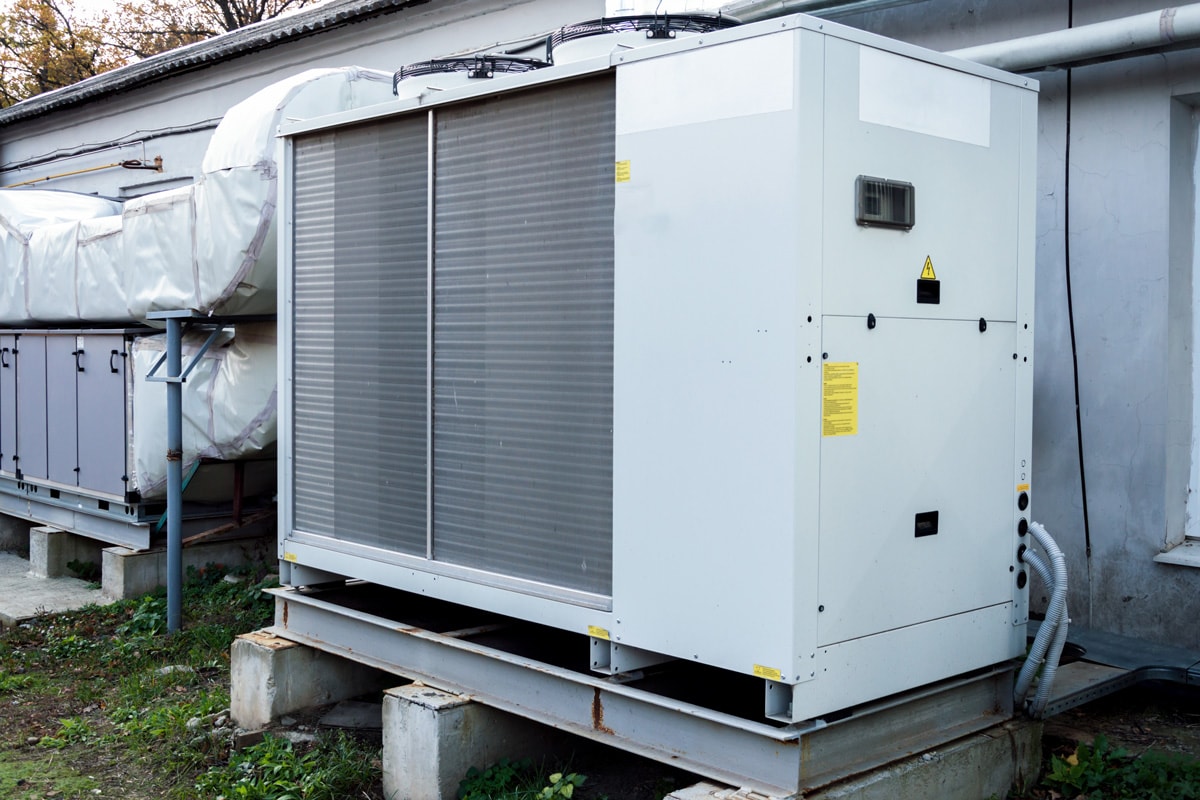
Condensation in your air handler is normal. But if you see that it is becoming too much, then you should immediately take action to stop it.
You can add or replace the insulation around your air handler unit- including the area where it is located. You can also use a dehumidifier to control the humidity around your air handler, or you can change the filter on the unit.
Also, check your drain pan for rust or cracks and repair it.
If all these measures don't stop the problem, then it's time to call your trusted HVAC professional for help.
Lastly, if you enjoyed this post, check out our other articles before you go:


